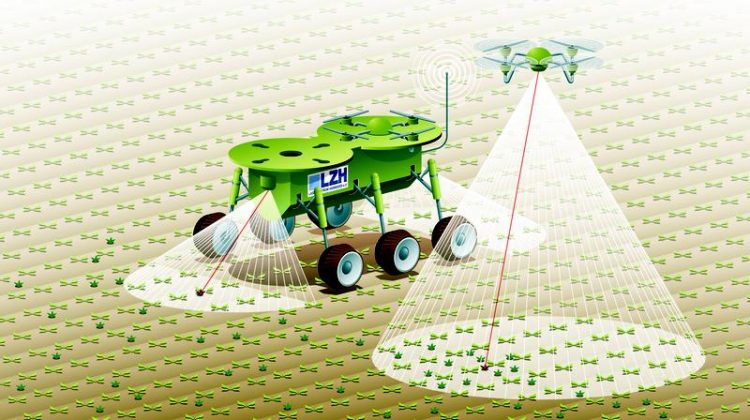Laser versus weeds: LZH shows Farming 4.0 at the Agritechnica

Vision of an agriculture of the future, by means of autonomously driving or flying systems, weeds can be removed from the field in a sustainable and environmentally friendly way. Graphic: LZH
The new approach of the LZH is based on the non-contact, optical interaction of light with biological material: cameras can be used to distinguish weeds from crops.
This is the basis for using laser radiation to precisely damage weeds and thus help crops to gain a decisive growth advantage.
The use of herbicides can be drastically reduced with such a process. Since laser radiation acts purely physically, no resistances are formed, the soil can be preserved and beneficials are protected.
In addition, the laser-based approach can easily be integrated in Digital Farming.
Removing weeds from carrots, sugar beets and onions
The first application areas are crops with a high added value in organic farming, such as carrots, sugar beet and onions.
The operation of such a laser-based system is possible on different platforms: autonomous, self-driving, front-mounted or rear-mounted.
PD Dr. Merve Wollweber, m.wollweber@lzh.de
Media Contact
More Information:
http://www.lzh.de/All latest news from the category: Trade Fair News
Newest articles

Making diamonds at ambient pressure
Scientists develop novel liquid metal alloy system to synthesize diamond under moderate conditions. Did you know that 99% of synthetic diamonds are currently produced using high-pressure and high-temperature (HPHT) methods?[2]…

Eruption of mega-magnetic star lights up nearby galaxy
Thanks to ESA satellites, an international team including UNIGE researchers has detected a giant eruption coming from a magnetar, an extremely magnetic neutron star. While ESA’s satellite INTEGRAL was observing…

Solving the riddle of the sphingolipids in coronary artery disease
Weill Cornell Medicine investigators have uncovered a way to unleash in blood vessels the protective effects of a type of fat-related molecule known as a sphingolipid, suggesting a promising new…





















